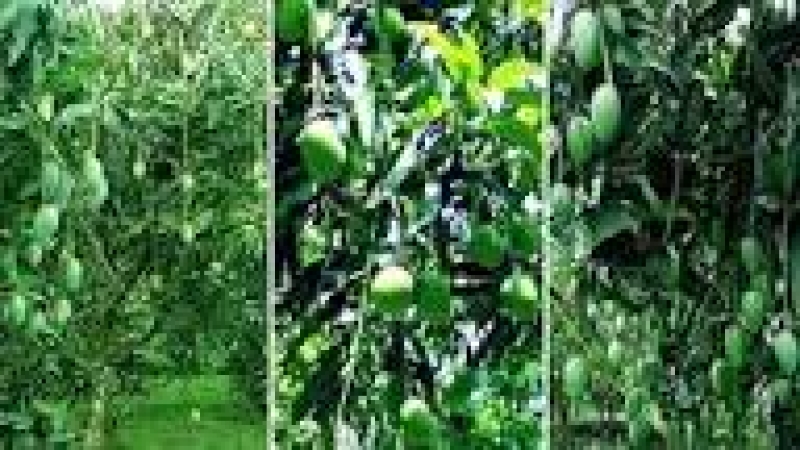- UNRWA Situation Report on Crisis in Gaza & Occupied West Bank |
- Intimidation or bloodshed cannot halt Bangladesh’s march to democracy |
- Khaleda Zia integral to an important chapter in BD history: Yunus |
- Enthusiasm marks Victory Day celebrations across Bangladesh |
- Dhaka-Delhi ties deep; to be shaped by trust, dignity, mutual respect |
Bumper 'Haribhanga' Mango Harvest Likely, Trade Begins

Amid strong predictions of a bumper harvest this season, business activities surrounding the famed indigenous 'Haribhanga' mango have already begun across Rangpur and nearby regions.
Despite facing a dry spell in February and March, frequent rainfall in April revived the mango orchards, creating favorable conditions for the juicy, fibreless variety to flourish. Experts, officials, and farmers alike are now optimistic about a plentiful yield, with hopes running high for strong profits.
Farmers across Mithapukur upazila and other parts of the district are currently busy tending to their orchards, nurturing the developing fruits and preparing for the harvest set to begin in late May and continue through July.
Traders from Dhaka, Gazipur, Narayanganj, Cumilla, and beyond—as well as young local entrepreneurs engaged in online mango sales—have already begun flocking to Rangpur in search of Haribhanga mangoes, a variety known for its unique taste and commercial value.
The Department of Agricultural Extension (DAE) has projected a bumper yield of improved-size Haribhanga mangoes this year. “Haribhanga mango has already earned recognition as a Geographical Indication (GI) product of Rangpur, boosting its demand both locally and internationally,” said Krishibid Md. Afzal Hossain, Deputy Director of the DAE’s Rangpur office.
Last season, the region produced 38,508 tonnes of Haribhanga mangoes from 2,556 hectares of orchards across all five districts in the Rangpur division. Of that, Rangpur district alone accounted for 29,772 tonnes from 1,910 hectares.
Encouraged by growing demand and profitability, farmers have expanded cultivation this year. The variety is being grown commercially in villages across Mithapukur upazila—including Podaganj, Akhirarhat, Khoragachh, Matherhat, and Lalpukur—as well as in other upazilas of Rangpur, and parts of Gaibandha, Kurigram, Lalmonirhat, and Nilphamari districts.
A recent visit to several orchards revealed farmers busy watering trees and caring for the tender mangoes. Monirul Islam, a grower from Lohanipara in Badarganj upazila, said, “If the weather remains favorable, we’re looking at a bumper harvest this year.”
Farmer Nur Hossain of Podaganj village echoed the sentiment: “With proper care and good weather, we expect a strong yield and solid profits.”
Other seasoned mango farmers—including Afzal Hossain, Golam Mostafa, Ansar Ali, Bablu Master, and Ruhul Amin—also shared their optimism. Golam Mostafa, who has been cultivating Haribhanga mangoes for 18 years, said, “This mango has changed my life. It’s brought me financial stability and self-reliance.”
With harvest season fast approaching, the excitement is palpable across the Rangpur region, as both farmers and traders prepare for what may be one of the best Haribhanga seasons in years.

